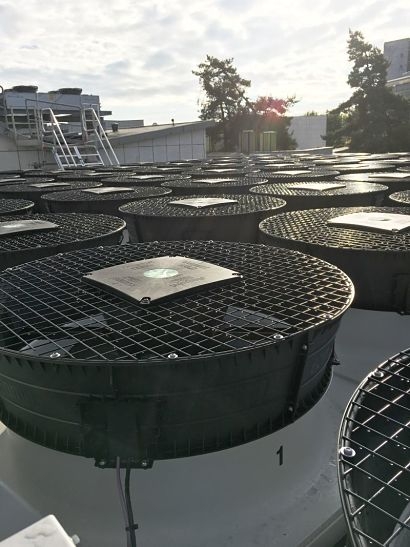
The system will be integrated with the existing solar heating plant at the site, boosting its efficiency and enabling a higher level of renewable energy in the plant’s energy supply. The solution is customised to fit the district heating plant’s individual energy needs, which includes integrating the system with the plant’s existing 6.376 square metre solar heating plant and hot water accumulation tank.
The global demand for heat in industries vastly exceeds the demand for electricity. However, sourcing heat from renewables remains a challenge. Within the Danish district heating industry, large electrical air-to-water based heat pumps have proven to be a valuable asset in creating integration and balance between energy systems.
The heat pump will help optimise the temperature in the solar heating plant during months with the least amount of sunshine thus boosting the overall efficiency of the plant.
“At Ørum Varmeværk, our main focus is to ensure our consumers a low cost and price-stable heat supply” said Jan Hoberg Østergaard, chairman of Ørum Varmeværk. “Today, our energy production is based on natural gas supplemented with solar heat. Integrating a heat pump system into our supply allows us to lower the energy costs by reducing the gas consumption and by making the energy production more flexible. We can produce electricity and heat using gas, when the price of electricity is high while we can use electricity for the heat pump, when the price is low and thereby help balance the grid. Moreover, this flexibility provides our consumers with energy optimal and sustainable heating”.
Per Aasted, Sales and Project Engineer at Aalborg CSP, added that in Ørum the company is integrating the heat pump with the district heating plant’s existing solar heating system in an intelligent way, which enables the solar collectors to harvest more energy during the seven coldest months and that at the same time, the energy borrowed from the solar heating system will help to improve the efficiency of the heat pump during those periods, where it has the greatest value for the overall efficiency.
With a capacity of 2.5 MW at 5 °C, the plant is capable of producing approx. 10,000 MWh heat annually. Combined with the district heating plant’s existing solar heating plant it will cover approx. 93 percent of the customers’ heat consumption.
Besides offering a cost competitive solution for heat production, the integrated heat pump system also prevents the emission of at least 1,580 tons of CO2 per year.
For additional information:

